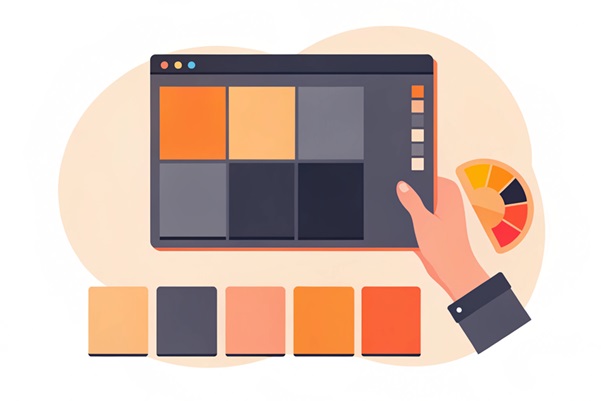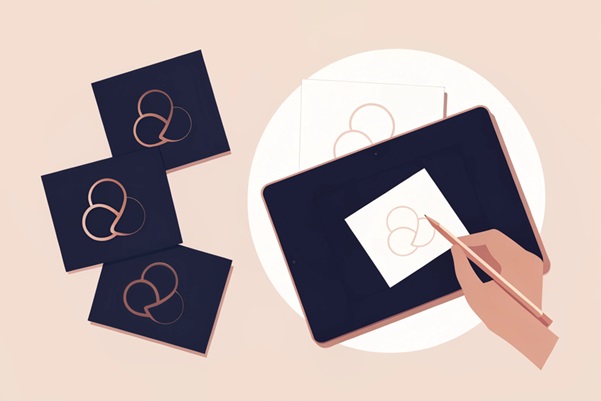Logo Trends 2025: What's Next in Branding?
As we move into the next phase of branding, 2025 is set to bring fresh design trends to the forefront of logo creation. Staying on top of emerging trends is essential for brands to remain competitive, memorable, and relevant to modern consumers. In a world where digital interactions dominate, logos have become more than just static images—they are essential tools in conveying a brand’s identity across various platforms.
In this article, we will explore the most significant shifts that will define logo design in 2025, from the continued rise of minimalism to the increasing incorporation of motion and animation. We’ll also look at how technology is impacting branding and how companies can use these trends to connect with their audience in innovative ways.
This article was prepared by the experts at Turbologo.
What to expect in logo design trends for 2025: Key shifts in the industry
Logo design is evolving rapidly, influenced by changing consumer behavior, technological advancements, and new creative techniques. In 2025, we can expect to see several key shifts in how logos are conceptualized and executed.
Technology is playing an increasingly significant role in shaping these trends. For example, AI-powered design tools are helping brands create more personalized and effective logos by analyzing vast amounts of data on customer preferences. Augmented reality (AR) and virtual reality (VR) are also emerging as tools for creating dynamic, interactive branding experiences.
One trend gaining significant momentum is the use of dynamic logos, which can change or adapt based on context, platform, or user interaction. These logos are not static but can evolve in real-time, offering brands a unique opportunity to engage their audiences in a deeper, more interactive way. Another shift involves the use of custom typography, allowing companies to develop a more distinctive visual identity and stand out in crowded markets.
As consumer behavior shifts, logos are becoming a stronger reflection of brand values. Companies focus on authenticity, inclusivity, and sustainability, ensuring their visuals align with these principles. Using create logo tools, brands can design logos that effectively communicate their identity.
Minimalism and simplicity: The continuing dominance of clean logos
The trend of minimalism is showing no signs of slowing down in 2025. Simplicity in logo design allows for greater versatility, scalability, and impact, making it easier for brands to be recognized across various media, from digital platforms to physical products. Simple logos are easier to reproduce, ensuring consistency in brand presentation.
A minimalist logo should focus on core elements—using clean lines, limited color palettes, and easily recognizable shapes. Brands that embrace simplicity often create logos that are timeless and can stand the test of time, avoiding the risk of becoming outdated.
Iconic logos like the Nike Swoosh or McDonald’s golden arches are perfect examples of how a simple design can convey an immense amount of meaning. These logos remain powerful because they are uncomplicated yet deeply symbolic.
Some benefits of minimalism in logo design include:
- Versatility: Simple logos are easier to scale across different sizes and platforms.
- Recognition: A clean design allows for quick recognition and easier memorability.
- Timelessness: Minimal logos are more likely to stand the test of time compared to more complex, trendy designs.
By sticking to a minimalist design approach, brands ensure that their logos remain relevant and functional long into the future, without getting caught up in fleeting trends.
Dynamic and animated logos: The rise of motion in branding
The future of logos in 2025 will undoubtedly involve an increased use of motion. Dynamic and animated logos are rapidly becoming more popular, as brands look for ways to create more engaging, interactive experiences for their audiences.
Technology has made it easier to integrate movement into logos, which can be particularly impactful on digital platforms where motion is a key part of user interaction. Animated logos allow brands to tell stories, express emotions, and capture attention in a way that static logos cannot.
This trend can be seen in companies like Google, which often incorporates subtle animations into its logo design to celebrate holidays or special events. Animated logos can also be more effective in digital advertising, where eye-catching motion grabs the user’s attention more quickly than static images.
The benefits of dynamic logos include:
- Engagement: Motion captures attention and draws viewers in, especially in the digital space.
- Storytelling: Animated logos can tell a short story or express a deeper meaning, creating an emotional connection with the audience.
- Memorability: The movement in animated logos can make them more memorable and noticeable.
While adding motion to a logo can enhance the user experience, it’s essential that brands carefully balance animation with brand consistency. A dynamic logo should enhance the identity, not overshadow it.

Custom typography: How personalized fonts are shaping logo identity
Typography is becoming an increasingly important element of logo design in 2025. As the market becomes more saturated with similar logos, brands are turning to custom typography to create a more unique identity. Personalized fonts allow businesses to convey their personality in a way that a pre-designed font simply cannot.
Custom typography can give a brand a distinctive look and feel, making its logo more memorable. Whether it’s a bold, modern typeface or an elegant, vintage script, the choice of font plays a key role in defining the brand’s voice. Typography can convey emotion, evoke nostalgia, or project strength, depending on how it’s used.
Many companies are now investing in bespoke typefaces to ensure their logos stand out from the competition. Custom fonts allow for greater flexibility in how the brand is represented, giving companies more control over their visual identity.
Here are some reasons custom typography is growing in popularity:
- Distinctiveness: A custom typeface gives a logo a one-of-a-kind appearance that sets it apart from competitors.
- Brand personality: Fonts can be designed to reflect the brand’s character, whether it’s playful, serious, or sophisticated.
- Flexibility: Custom fonts offer greater design flexibility, allowing for a more tailored visual identity.
By using a custom font, brands can ensure that their logo not only stands out but also accurately communicates their personality and message to their audience.
Q&A: Logo design questions for 2025 and beyond
How can brands stay on top of logo design trends without losing their unique identity?
Staying true to your brand’s core values while embracing new trends is essential. Brands can integrate emerging trends like minimalism or dynamic logos, but they must ensure that their core identity remains consistent. The key is to adapt and evolve without compromising the message or values that the logo represents.
Is it necessary to redesign a logo to stay relevant in 2025?
Not necessarily. Many successful brands have kept their original logos for decades. However, as trends shift, subtle updates or refinements might be needed. It’s important to evaluate whether a logo still effectively represents the brand and resonates with the target audience.
How will technology continue to influence logo design in the future?
As technology advances, logos will become even more interactive and adaptable. AI will continue to play a role in personalized logo design, and augmented reality may offer new opportunities for immersive brand experiences. Staying updated with technology is crucial for brands that want to remain cutting-edge.
How can brands balance modern trends with timeless design principles?
The key to balancing trends with timeless design is to ensure that updates don’t overshadow the brand’s core identity. Incorporating modern elements, such as custom typography or dynamic visuals, can refresh a logo, but it should always remain consistent with the brand’s values and mission.
Conclusion: Navigating logo design trends for 2025 and beyond
As we move into 2025, logo design will continue to evolve with the times. Embracing new trends, such as minimalism, custom typography, and dynamic logos, offers brands exciting opportunities to engage their audiences in fresh and innovative ways. However, the key to designing a successful logo is to balance creativity with consistency. A logo should not only reflect the brand’s values but also stand the test of time, remaining relevant and recognizable in an ever-changing world. By staying ahead of the curve while maintaining the brand’s core identity, companies can create logos that resonate with consumers and last for years to come.

